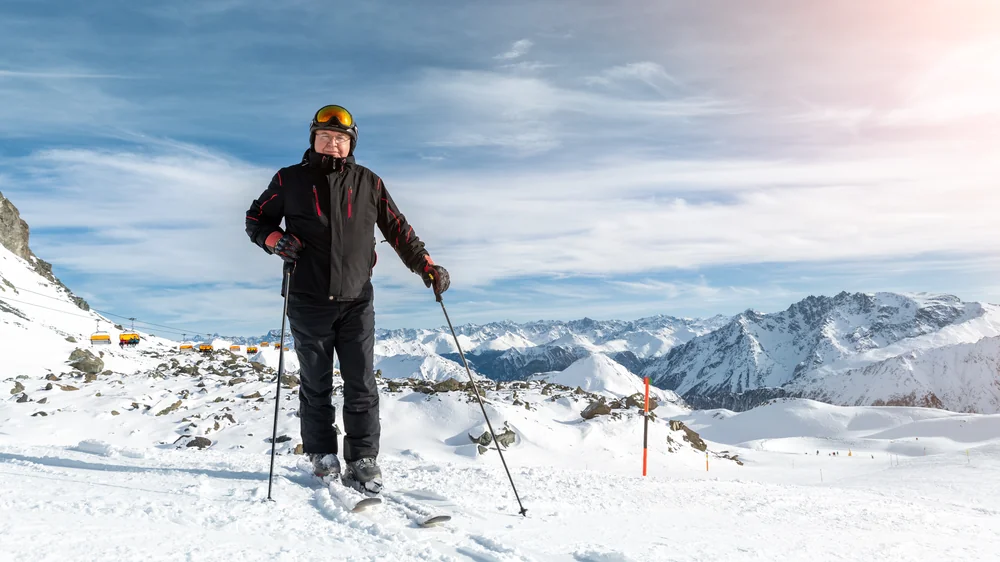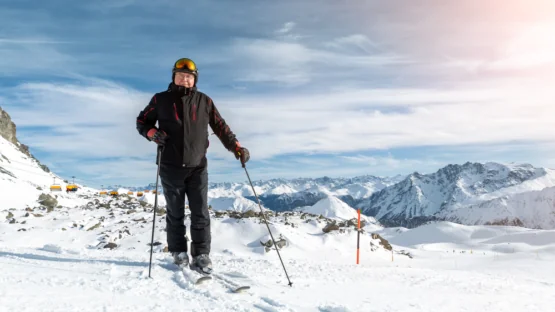In a new study published in Journal of Science and Medicine in Sport (JSAMS) Plus, researchers have shown that participating in such sports as snowboarding and skiing might counteract age-associated proprioception decline [1].
Ankles keep you balanced
It is no secret that exercise is one of the key components of lifelong health, which was even shown to slow down cancer progression in a recent study. However, the recommended intensity, frequency, and prevalence of different training modalities for various groups of people are still debated.
In addition to strength and cardio, physical activity guidelines usually include regular balance training. Indeed, keeping balance is an important skill, especially for older adults who have higher risks of falling and breaking bones due to their age-related fragility.
Balance is tightly connected with proprioception, the awareness of body position. The brain needs to integrate sensory information coming from various parts of the body via mechanoreceptors to control balance.
Of all the body parts, ankle proprioception is a critically important component of balance control, as evidenced by postural instability in individuals who suffer from neuromuscular disorders that affect distal leg muscles [2].
This proprioceptive decline is also observed in older adults. On the other hand, professional sports such as gymnastics, soccer, and badminton promote ankle proprioception and could potentially contract the age-associated lack of balance control.
In this study, the researchers noted that while snowsports are limited by environmental conditions, they are more popular activities among the general public than team-based sports. This study sought to explore whether snowsports are effective in protecting against age-related proprioception decline.
Snowsports improve proprioception
142 advanced and elite skiers and snowboarders between 12 and 70 years of age (average of 25.5) participated in this study. Their ankle proprioception was assessed using an Active Movement Extent Discrimination Assessment (AMEDA) device. This apparatus consists of a platform housing a fixed and a movable plate that rotates around its central axis.
During the test, the participants place their feet on each plate, which is randomly tilted to one of five positions. The participants are asked to identify the position of the tilted foot while looking straight ahead. The proprioception score is calculated based on how accurately the participant recognizes the foot position over 50 trials.
The researchers determined that there was no age-related proprioception decline among the participants, as they found no difference between the under-19, 19-39, 40-59, and 60+ age groups.
Interestingly, prior ankle injury did not affect proprioception as measured by AMEDA, as both participant groups with and without unstable ankles did equally well on the test. In addition, there was no difference between the male and female participants or among the participants involved in different snowsports (skiing only, snowboarding only, the two snowsports combined).
These results show that regular snowsport participation such as skiing and snowboarding, that occur in dynamic and changing environments, may i) protect against age-related proprioception decline, and ii) provide a rehabilitative effect for CAI. Thus, snowsport participation may be beneficial for active healthy aging and fall prevention.
Conclusion
This enlightening study demonstrates that engaging in snowsports could be an effective way to contract age-associated proprioception deficits. Although additional studies are required to confirm that these activities are superior to other sports in sustaining balance control in old age, sliding across unpredictable environments could be a determinant of their beneficial effect on ankle stability. In addition, the ankle rehabilitative effect of snowsports discovered in this study could be instrumental in developing successful recovery programs for people with ankle injuries.
Literature
[1] Tracey J. D., et al. Age-related proprioceptive decline is not seen in lifelong skiing and snowboarding participants: Lessons for balanced active healthy ageing. JSAMS Plus, 2772-6967 (2022). https://doi.org/10.1016/j.jsampl.2022.100010.
[2] Lencioni T., et al. Postural stabilization and balance assessment in Charcot–Marie–Tooth 1A subjects. Gait & Posture, 481-486 (2014). https://doi.org/10.1016/j.gaitpost.2014.07.006.



